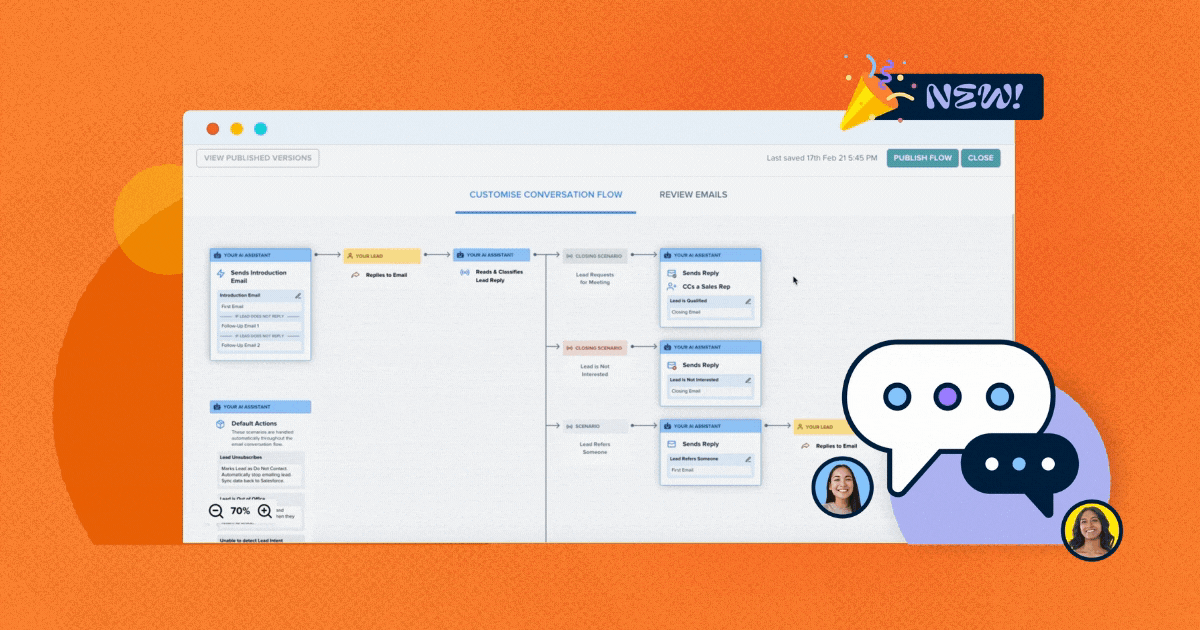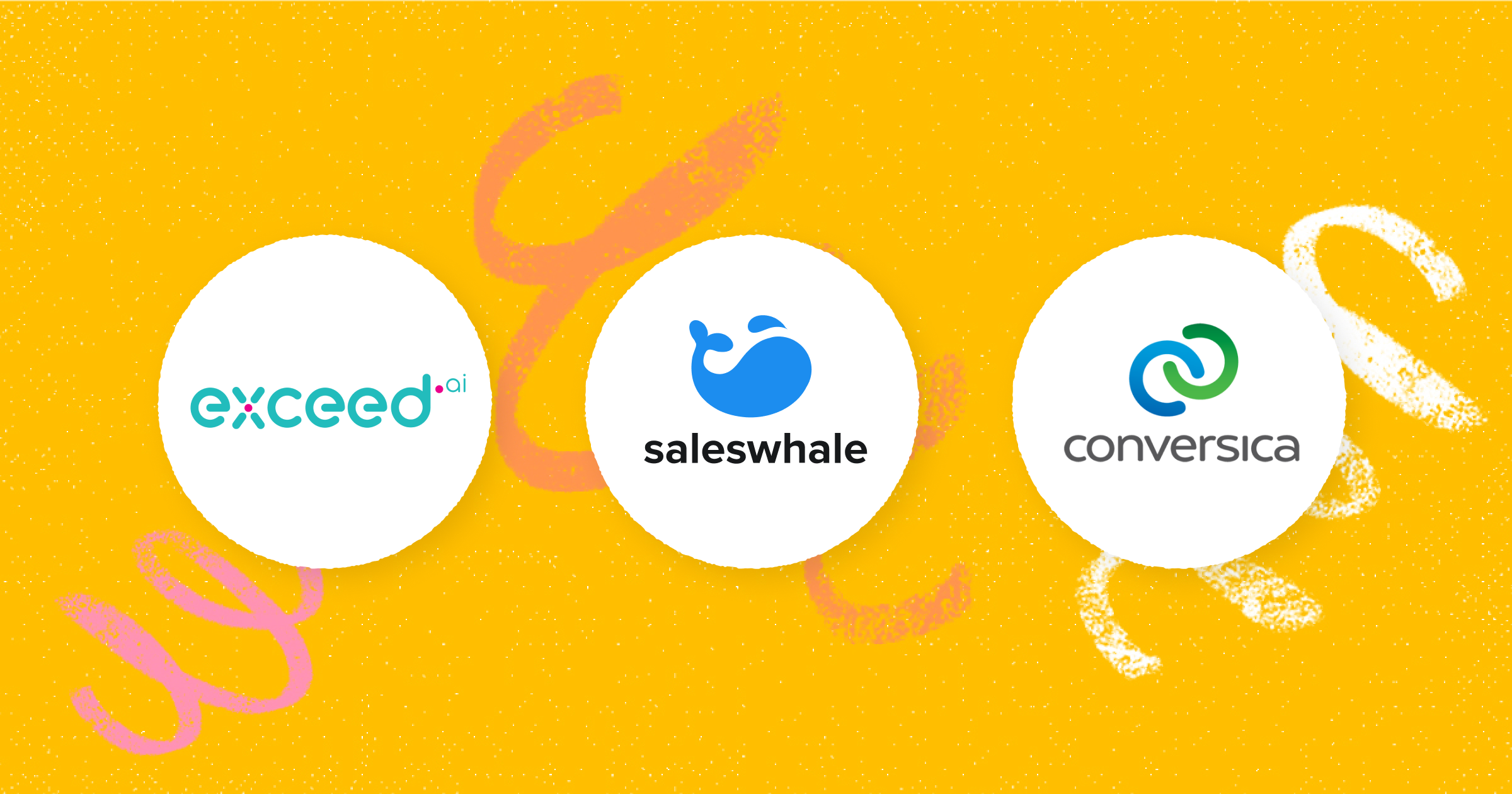Saleswhale Blog | 6 Min Read

“Tim, I'm going to have to cut your marketing budget by 35%.”
Well, I did not exactly say "bring it on!" when my CEO, Gabriel delivered this news on a Monday morning. In fact, he could not have picked a worse time to deliver that message.
I had just spent a month planning out the marketing calendar for 2020. Google Ad campaigns were all set up, LinkedIn sponsored posts were ready to launch, a content agency we hired was on standby, trade show sponsorships were selected, and the list goes on.
I mean, I get it.
With a downturn looming, one of the first cuts is typically the marketing budget.
But business still has to go on. Sales still needs qualified leads to work on. Marketing needs to rise to the occasion.
Ever since my marketing budget got slashed, I have been working closely with Gabriel and colleagues in other departments to develop a new game plan.
And you know what?
It is possible for marketing to deliver quite a lot, even with a lot less.
Here are some lessons that I’ve learnt along the way.
When your market budget gets cut, it’s tempting to go through your plans to see which ones to jettison.
Don’t.
Pause. Gather your thoughts.
Try not to axe anything without speaking to your CEO and leadership team first.
The crucible for me was an intense one hour meeting I had with my CEO, Gabriel. I drew out all my plans on a whiteboard and walked Gabriel through them. Then we decided what to cut and what trade-off to make together.
It’s important that your CEO and leadership teams know not just your plans, but also your thought processes. This minimizes misalignment or blame games that might happen down the line.
Also, talk to your counterparts in sales. They are the ones who will be directly impacted by the changes in your plans.
“What are you optimizing for?”
“What are your desired outcomes?”
“When it comes to trade-offs, what’s more important, X or Y? Why?”
Work with sales to come up with a well-informed plan that will allow your company to weather the storm. You don’t want to lose crucial momentum in generating MQLs, sales opportunities, and pipeline for your sales colleagues. Remember, sales and marketing always need to be 100% informed and aligned.
What has been proven to work for you?
Double down, triple down on that. Deploy all your remaining budget on this, and lean into it, hard.
Great marketers love to experiment. But now is certainly not the time to be spreading your bets thin.
For us, content marketing, email marketing, and account-based-marketing were our key areas of focus.
We took a hard look at all our existing paid marketing initiatives and paused all campaigns that were either experimental or not giving us the best ROI (more on that later). Times are tough. It’s not just about being scrappy and saving money. It’s about being laser-focused on the core initiatives that we believed truly mattered—the big rocks.
We also revisited our sales processes and reexamined every stage a lead would go through. During hard times, every single lead suddenly becomes extra important. We revised service level agreements with sales and made sure every lead is constantly on the move. If sales didn’t have bandwidth to work them, marketing needed to make sure they were at least being kept warm by a lead nurture track.
Finally, we relied on, and looked into tools like Clearbit, Madkudu, Metadata.io, and Saleswhale (yes, we dogfood our product). These tools help us streamline our demand generation and lead qualification, plug the "nurture gap", and optimize efficiency.
This is an interesting one.
The thing about marketing is we can usually get much done independently without bothering other teams.
Want to run a paid ads campaign? Try a new content strategy? Buy some billboard advertising space? A/B test a landing page?
No problem.
However -
Want to build a free tool? A demo sandbox? Experiment with some viral feature within your app?
Not so easy.
Other teams (e.g. Design, Engineers, Product) are suddenly thrown into the mix and no one has the time for your little experiments.
How did we deal with that? We spun out a growth team.
The aim of a growth team is to increase growth by leveraging cross-functional knowledge and product/engineering resources in the leanest way possible.
With Gabriel as the executive sponsor, we created a small internal growth team that comprises the following roles:
The charter of the growth team is to run tight experiments (on the side) and search for high-leverage growth opportunities. Some of the experiments we’ve done so far include experimenting with free trial sign-ups and building interactive free tools.
We meet once a week, brainstorm ideas in our backlog, execute according to plan, and always back up all findings with data.
The best part? These resources don't come out of my marketing budget :))
Our current growth experiment aims to 10X a proven marketing channel by adding programmatic leverage to processes. Yeah it's ambitious alright.
Note: This is a whole big exciting topic, and I’ve learnt a ton over the last few weeks. You will hear more about this real soon.
Gabriel once wrote about how making customer success a top priority is crucial to Saleswhale’s growth.
We still believe in this.
The easiest and most cost-effective way to build a brand is to double down on customer marketing. Make customers happy enough to be your advocates.
One way we are doing this is partnering with customers to do co-marketing. Co-marketing is when two or more companies promote a marketing product (such as an eBook or webinar) together.
We also started conducting customer-only webinars. These webinars allow our customers to understand our product better. What are the latest features? How can customers use them to make their campaigns even more successful? When our customers are convinced about the value of our product, they are more likely to stick around long term.
We also mobilised happy customers. Featuring them in case studies and asking for permission to publish the case studies on our website. If you’re a software company, it helps to have good ratings on G2. We used Delighted to find high NPS customers and ask these satisfied customers to write reviews.
Finally, ask for referrals. Second-order revenue has always been very important for Saleswhale. When champions or sales people move companies, they bring us along with them.
I know this sounds obvious, but you'll be surprised how many marketers fail to do this, even during tough times. Maybe we are optimists by nature - clinging on to hope for average-performing campaigns. Maybe we've invested so much time and energy in these campaigns that we can't just let go.
Now that the marketing budget has been slashed and impacted by the financial downturn, it is no time to spend money on low or even average performing ROI channels and campaigns.
We conducted a closed-loop analysis and were brutally honest about what’s working (and what’s not). We took a deep dive into our Google Analytics reports. Logged on to Salesforce and pored over the sales closed-won/closed-lost data. Recorded sales calls (we use Gong.io) and LISTENED to those calls. And we continued to communicate and collaborate closely with sales.
We didn't just focus on how many leads a campaign/channel could generate. For the most part, that's just a vanity metric because it really doesn’t matter how many leads campaigns bring in if none of them close (right?). This is my number one tenet—and something which grudgingly won my CEO’s trust and respect. Gabriel knows that I am not just optimizing to hit MQLs. I care about the ultimate ROI - revenue.
If the Gong sales calls show leading indicators that my leads are a bad fit, I will have to be ruthless about killing a marketing campaign. Even if it is bringing in a healthy volume of leads.
Once under performers are identified, marketing resources are redeployed towards campaigns that bring in leads that can close.
There will be a time for campaigns that drive brand awareness and loyalty. A recession is NOT the time. Every single bullet has to hit the target.
We choose to stay nimble, and keep a close eye on the numbers and the ROI.
So that's that. Tough times are ahead.
Anyone can market with a million-dollar budget.
But when the chips are down, and budgets shrink, we must bring our best game to the fore.
This is time to show our mettle as marketers.
Godspeed everyone!


VP, Marketing at Saleswhale
Sign up for cutting edge ideas on conversational marketing, AI assistants and martech.

Saleswhale for Salesforce allows you to build powerful automated lead conversion workflows. This allows you to re-engage with your neglected marketing leads at...
19 APR 2021

Demand generation and marketing teams generate more leads at the top of the funnel than ever in this new digital-first world. Saleswhale helps ensure those...
1 MAR 2021

Marketers that focus on MQLs end up doing the wrong things in order to achieve the metrics. So I changed it.
16 JUN 2020

Conversica isn't the only player out there. Learn how Saleswhale and Exceed.ai compare and make an informed decision.
15 APR 2021
By providing your email you consent to allow Saleswhale to store and process the personal information submitted above to provide you the content requested.
You can unsubscribe at any time by clicking the link in the footer of our emails. For information about our privacy practices, please visit our privacy page.